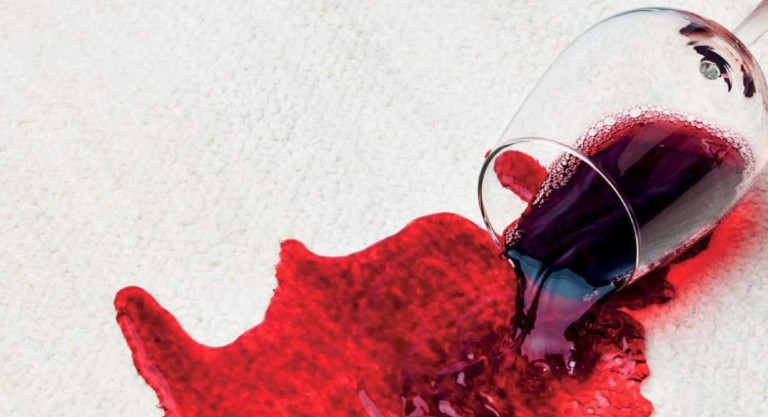You may have seen some of the commercials on television that show a bottle of spot remover that can quickly and easily remove stains from carpet and upholstery like magic. Red wine, ketchup, coffee, fruit punch, spaghetti sauce, grass stains and more are removed in seconds with no rubbing or scrubbing. Just spray and blot!
If only it were that easy!
The truth is advertisers are not being completely honest with you. The spots are usually on new carpet that is most likely olefin or polyester–two fibers that are difficult to stain. They choose spots that are easily removed by the chemistry of their spotter. The same cleaner on dried mustard on a three-year-old nylon carpet would produce less than stellar results.
In reality, the ease or difficulty of spot removal will vary depending on fiber type, age and condition of the carpet, age of the spot, the type of stain, and even the cleaning agents and methods previously used on the carpet.
The first step is to identify the spot. Sometimes you can’t be sure what it is, so with unknown spots, we play “detective.” Using clues like the color, location, texture, odor and shape we figure out what it might be. The next step is to categorize the spot. There are four categories of spots:
Category 1: Water-soluble Water-soluble spots respond to water based solutions. There are several spotting agents that fit into this category. Acid spotters work best on alkaline soils. Alkaline spotters work on common acid-based soils. Enzyme spotters break down protein spots like blood, milk, eggs and grass.
Category 2: Solvent-soluble Solvent-soluble spots are best treated with solvent-based spotters. This category includes tar, petroleum grease, lipstick, ink, dried paint, gum and adhesives.
Category 3: Insoluble spots Insoluble spots include substances that cannot be dissolved with water or solvent spotters. Some examples are graphite, carbon, fireplace ash and powdered copier toner.
Category 4: Specialty treatments Specialty treatments include strong acids, oxidizers, reducing agents and specialized chemical reactions. Rust, food dyes, urine stains and mustard fall into this category.
First things first. Before applying any spotting agent we determine the fiber type. It is important to be sure that the spotting agents and cleaning method will not harm the fiber. Once we have selected the correct spotter and qualified the fiber content, spot removal will follow 5 basic steps:
- Remove excess material with scraping or blotting.
- Apply the appropriate spotter to the spot. Do not oversaturate the carpet.
- Agitate gently. Never scrub or rub the carpet.
- Rinse.
- Blot with a clean white towel.
These are the basic steps. Our techniques, tools and processes will vary depending on your unique situation. Any remaining discoloration after the spot removal is a stain, and will require more expertise and specialized methods.
Bluegreen technicians are experts at identifying, categorizing and treating the spots and stains that other companies can’t. Call us today if you have questions or need help removing spots, odors and stains from your carpet.
